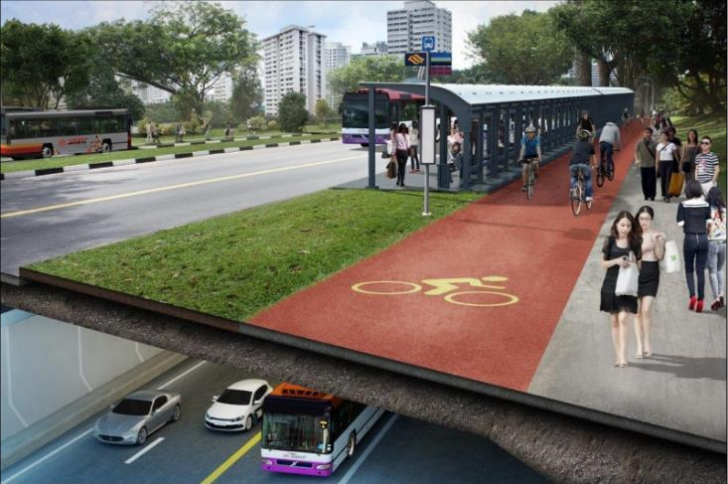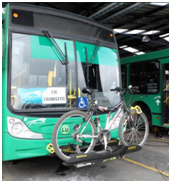
Diversity and Intermodality on Top in Mobility Agendas to Save Our Cities
Economic and environmental pressure challenges cities around the world to provide their citizens with an attractive, healthy and liveable living standard. As the world's urban population is expected to increase by 50% by 2050, mobility demand rises.

The pace of urban life is speeding up, citizens want to move around freely whenever and wherever they need to. In the meantime, congestion, bad air quality and lack of space are choking our cities, leading to a decline in quality of life.
In this complex framework, the health benefits of active transport (walking and cycling) emerge as great, affordable and ready-to-use solutions. If walking and cycling get coupled with public transport for first/last mile connectivity, they might be extremely efficient as well as healthy answers for urban mobility.
The International Association for Public Transport (UITP, in its French acronym) just released a position paper with the title 'Unlocking the health benefits of mobility,' addressing this very issue.
Diversity and intermodality might be the right solutions
Cycling is often treated as an add-on, rather than an integral part of urban and regional transport. Similarly, modal integration is often reduced to isolated measures, such as cycle parking at bus or train stations, and permission to take bicycles on underground trains or buses during off-peak hours. What public authorities might not be considering is the impact already available intermodality measures would have: these include cycle taxis, smart phone applications, different forms of citizen involvement, bike-share, bike-racks on buses, among many others.

Public transport systems are increasingly expected to respond to social demands for mobility and access, but also for health, inclusion, social and environmental justice. A discussion on intermodal transport in urban systems will define the social sustainability of our cities.
Dr. Lake Sagaris, director of the Laboratory for Social Change at the Pontificia Universidad Católica de Chile, thinks the answer is in diversity. Only a varied combination of sustainable urban mobility services can challenge the flexibility of the private car, still providing a healthy and environmentally viable alternative.
Singapore as a case study
 Singapore is a perfect example of a city that has grown impressively in the last decades. To address the needs of its commuters, the Active Mobility Unit (AMU) was formed in 2015 to plan for infrastructure, public engagement, communications and regulations. Cycling and Personal Mobility Devices (PMDs) are becoming increasingly popular in Singapore, and are getting progressively integrated in urban mobility plans. Ng Tze Seng is a Senior Engineer at AMU, and he unveiled some of the key features of the project.
Singapore is a perfect example of a city that has grown impressively in the last decades. To address the needs of its commuters, the Active Mobility Unit (AMU) was formed in 2015 to plan for infrastructure, public engagement, communications and regulations. Cycling and Personal Mobility Devices (PMDs) are becoming increasingly popular in Singapore, and are getting progressively integrated in urban mobility plans. Ng Tze Seng is a Senior Engineer at AMU, and he unveiled some of the key features of the project.
Ongoing efforts are in place to retrofit existing built-up areas with cycling path to be completed in eight public housing towns. With 90km of paths already in place, this is already a success, considering the high level of coordination among various government agencies needed for the planning and implementation of these cycling paths.
Furthermore, regular feedbacks are also obtained from residents and commuters, so that fine-tuning and locally relevant adjustments can be made. Such an approach witnesses of the pioneering character of the project.
The Future of our Cities is in the hands of policy-makers
As stated by Riccardo Marini of Gehl Architects at Velo-city Taipei: “Our cities are designed for efficiency, not for people and health. Car addiction is causing health damages (air pollution, obesity and happiness), and the current road system is a major cause of this”.
Aware of the challenges urban areas will face in the next 25 years, Singapore is taking this into account, and Ng Tze Seng is confident a real shift is possible. Nevertheless, this isn’t but the beginning, and many other questions arise: will the change be fast enough? Will other megalopolises from all over the world follow Singapore’s lead? Will our present mobility be able to cope with such changes?
Topics:
Contact the author
Recent news!
Upcoming events
Contact Us
Avenue des Arts, 7-8
Postal address: Rue de la Charité, 22
1210 Brussels, Belgium









